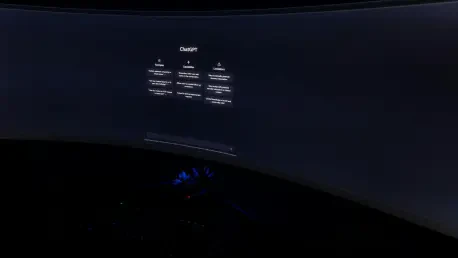In an era where technology evolves at breakneck speed, recruiters stand at the forefront of a seismic shift in talent acquisition. Picture a hiring landscape where algorithms predict candidate success with uncanny accuracy, slashing weeks off the process, yet only a fraction of professionals know how to harness this power. With artificial intelligence reshaping industries, the ability to wield AI tools is no longer a luxury but a necessity for those tasked with building tomorrow’s teams. This pressing reality raises a critical question: are recruiters ready to adapt, or will they risk being left behind in a rapidly changing world?
The Urgent Need for AI Mastery in Recruiting
The stakes for recruiters have never been higher. Recent data from LinkedIn reveals that a staggering 86% of CEOs expect their talent acquisition teams to lead the charge in creating future-ready workforces. This expectation places immense pressure on professionals to not only meet current hiring demands but also anticipate the skills needed for roles that may not yet exist. Without AI proficiency, navigating this complex landscape becomes an uphill battle, as manual processes struggle to keep pace with the demands of modern organizations.
Moreover, the competitive edge is slipping away from those slow to adapt. Nearly half of recruiters surveyed express concern that their organizations could fall behind rivals within the next year if AI skills remain underdeveloped. This urgency underscores a broader shift in the industry, where technology is no longer just a tool but a strategic imperative that separates leaders from laggards in talent acquisition.
Mounting Pressures and Evolving Expectations
Beyond the push for innovation, recruiters face tangible challenges that compound the need for technological solutions. A 24% increase in requisition loads over the past year, coupled with shrinking budgets, creates a perfect storm of operational strain. Many professionals find themselves stretched thin, juggling higher workloads with limited resources, making the adoption of efficient tools a critical lifeline.
Organizational leaders are also redefining the role of recruiters, viewing them as strategic advisors rather than mere facilitators of hires. This shift demands a new skill set, one that blends human insight with data-driven decision-making. As expectations soar, the gap between what is asked of recruiters and what they are equipped to deliver widens, highlighting the immediate need to embrace AI as a means to bridge this divide.
AI’s Transformative Potential and Current Gaps
Artificial intelligence offers a game-changing opportunity to revolutionize recruiting, yet adoption remains uneven across the field. Only about one-third of recruiting teams are classified as “AI power users,” leveraging technology alongside human skills to drive meaningful outcomes. In contrast, many others use AI solely for basic efficiency, missing the chance to elevate their strategic impact.
Tools like LinkedIn’s Hiring Assistant demonstrate the potential for transformation, with early adopters reporting a 70% boost in InMail acceptance rates and a drastic reduction in pre-screening time to just eight minutes per role. However, dissatisfaction lingers, as 60% of business leaders express frustration with the slow progress of AI integration in their organizations. This disparity points to a critical opportunity: automating repetitive tasks could redefine recruiting, provided the right strategies are in place.
Real-World Perspectives on AI Adoption
Across industries, the impact of AI on recruiting is already evident through the experiences of those who have embraced it. Erin Scruggs, LinkedIn’s VP of Global Talent Acquisition, emphasizes that integrating AI tools into daily workflows represents a fundamental mindset shift, moving beyond traditional methods to a tech-forward approach. This perspective highlights how adaptation starts with small, intentional changes in routine.
Nicole Lovell from Jacobs, an early adopter of AI strategies, shares a practical example of starting with “AI-curious” team members to target specific roles like mid-level engineering positions. The result was a striking 56% increase in InMail success rates for those roles. Meanwhile, LinkedIn’s Chief People Officer, Teuila Hanson, notes that AI frees up time for recruiters to build deeper candidate relationships, reinforcing the human element amidst technological change. These insights, grounded in real outcomes, illustrate both the promise and the learning curve associated with AI adoption.
A Roadmap to Building AI Proficiency
For recruiters looking to close the skills gap, a structured approach to mastering AI is essential. Begin by identifying specific areas, such as mid-level hiring, where AI can deliver immediate impact, allowing for focused experimentation. Partnering with team members eager to explore technology, as seen in successful pilot programs, can build momentum and uncover best practices tailored to unique organizational needs.
Leveraging accessible platforms like LinkedIn’s Hiring Assistant offers a practical entry point, streamlining workflows and reducing manual effort. Additionally, seeking out training programs and fostering a “fail fast” mentality encourages rapid learning through trial and error. Securing executive support is equally vital, as it cultivates a culture of adaptability. Keeping an eye on emerging tools, such as integrations with systems like Workday or upcoming voice pre-screening features, ensures recruiters remain ahead of industry trends.
Reflecting on the Path Forward
Looking back, the journey toward AI mastery in recruiting revealed a landscape of both challenge and opportunity. The pressure to meet soaring expectations while navigating resource constraints tested the resilience of talent acquisition teams. Yet, through targeted adoption and a willingness to adapt, many discovered that technology could amplify their impact in ways previously unimaginable.
As the field continues to evolve, the focus must shift to actionable steps that sustain this momentum. Prioritizing ongoing education, fostering collaboration between tech-savvy and traditional recruiters, and aligning AI initiatives with broader business goals emerged as key strategies. By embedding these practices, the recruiting profession solidified its transformation into a strategic powerhouse, ready to shape workforces for an ever-changing future.









